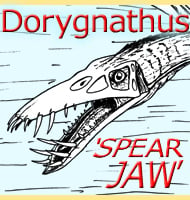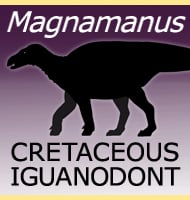In Depth
Pelorocephalus lived towards the end of the Triassic, a time just before the temnospondyl amphibians declined to be only a small portion of their former selves. Pelorocephalus was typical of the temnospondyl body type, resembling a large heavily built salamander-like creature that in the instance of Pelorocephalus grew to around one meter long, though there is some variance between the species. With the land dominated by reptiles such as archosaurs, rausuchians and even very primitive dinosaurs, Pelorocephalus would have been restricted to hunting in the water where these other predators could not venture into.
As a member of the Chigutisauridae, Pelorocephalus is considered to be more closely related to genera such as Compsocerops, Keratobrachyops, Koolasuchus, Kuttycephalus and Siderops. Some genera that are closely related to Pelorocephalus were some of the last temnospondyl amphibians known to have survived, with Siderops living in the Jurassic and Koolasuchus living in the Cretaceous.
Further Reading
- Redescription of the skull of the holotype of Pelorocephalus mendozensis Cabrera, 1944 (Amphibia, Temnospondyli) Triassic of Cerro Bayo, Province of Mendoza - C. A. Marsicano - 1990.









